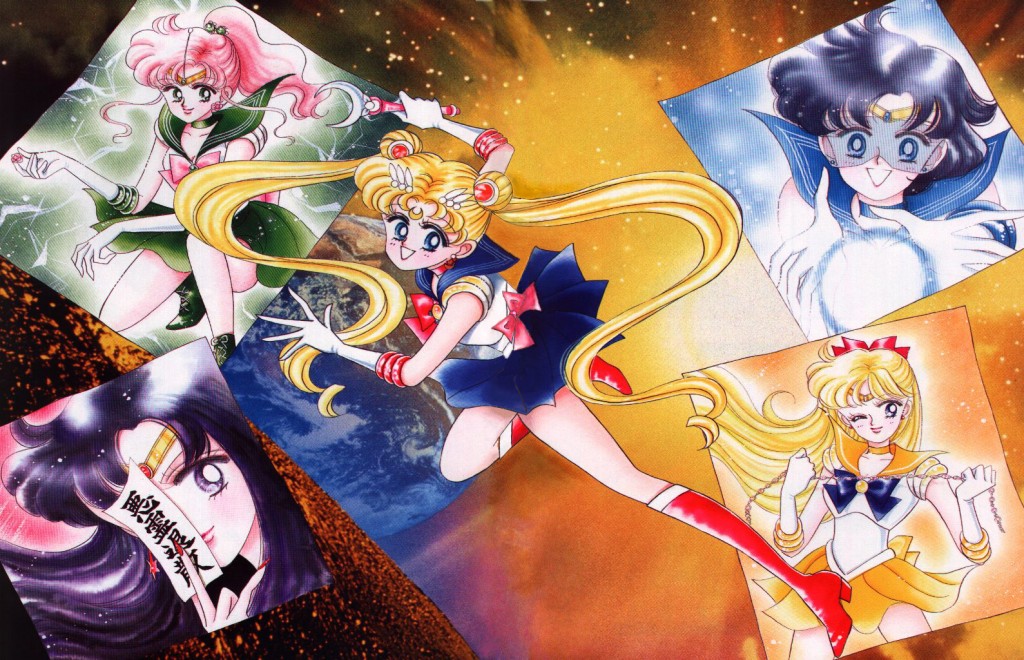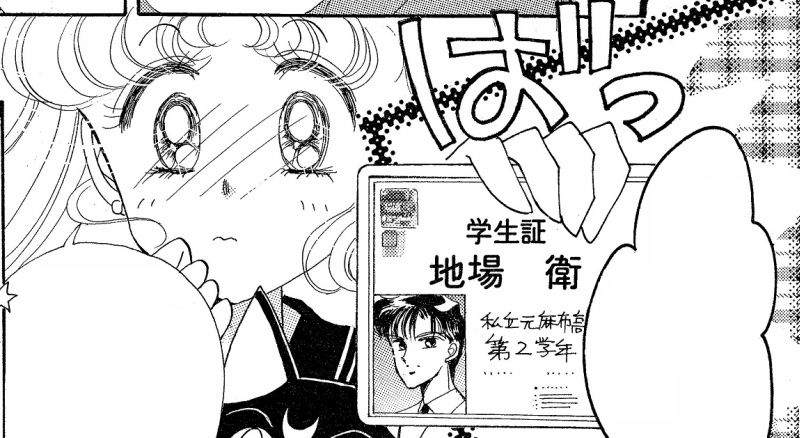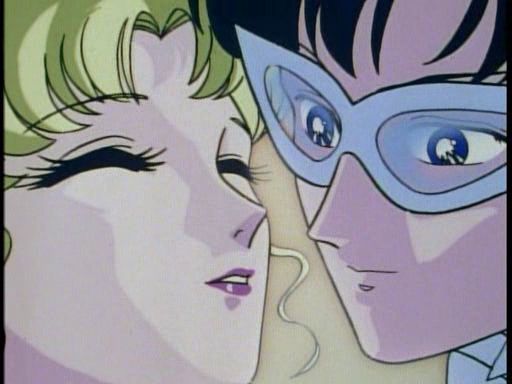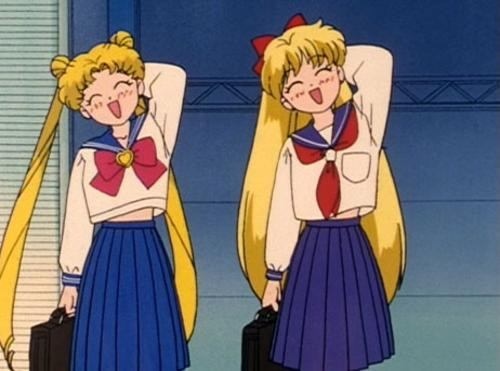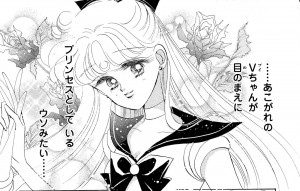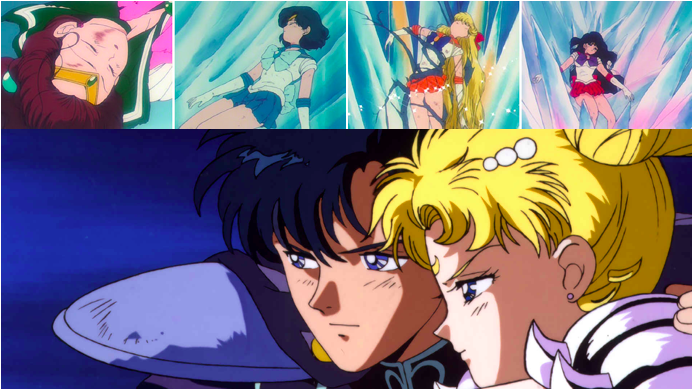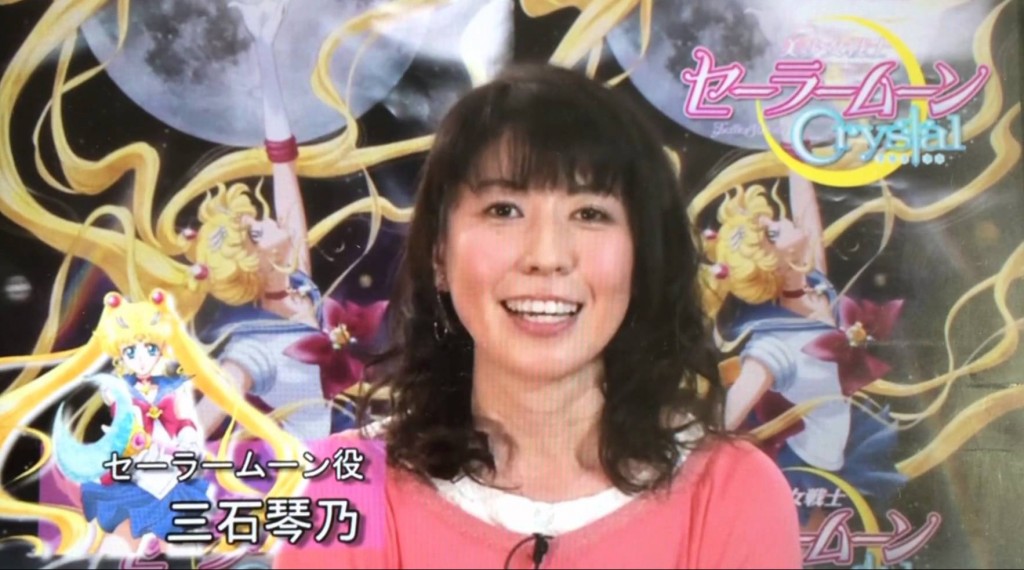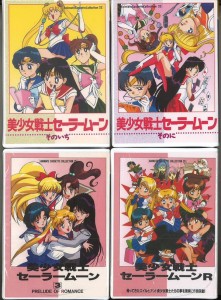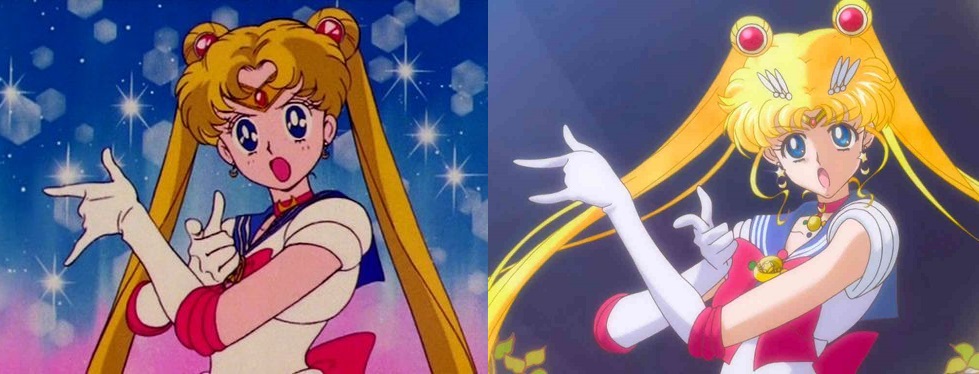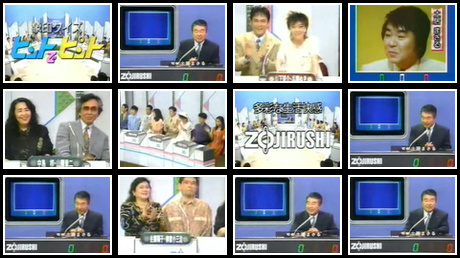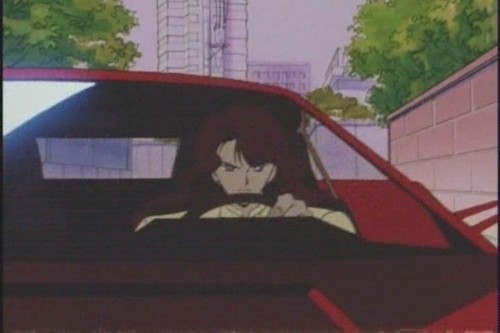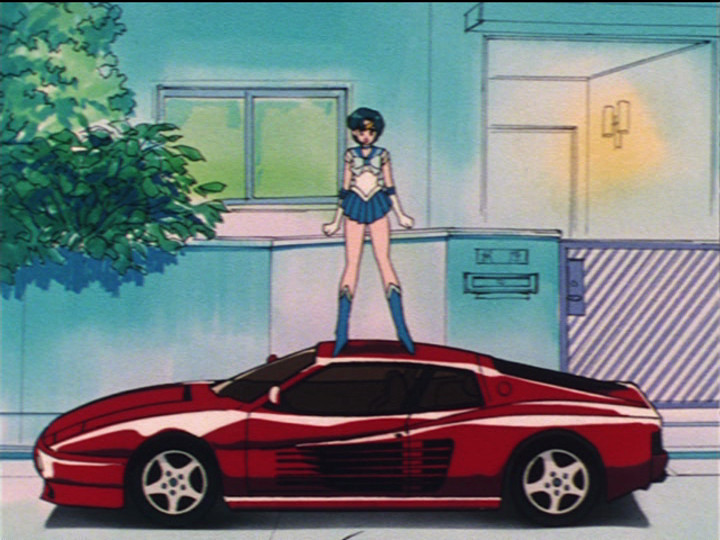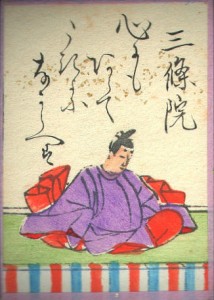With such a long-running and beloved series like Sailor Moon, it’s easy to overlook some of the more basic details of the series as obvious and just part of “the way things are,” but when you actually stop and take a close look, you can’t help but wonder why that’s how things turned out. The fact that there were originally five members of the Sailor Team, for example, is one of those. Often referred to as the “Inner Senshi,” the original five sailor-suited beauties making up the core team are simply seen as the staple of the series, but when you actually stop and think about it, things don’t quite add up. Though there’s been no direct word from Ms. Takeuchi on this issue, there’s a surprising amount of tradition in Japanese TV, manga, and traditional theater culture as well which supports this five member team, so let’s see if we can make some sense of it!
Tag Archives: Anime
Would it be Legal for Mamoru and Usagi to Date?
Or, a better (though not as easy-to-read) title would be “What are the Legal Implications for the Relationship Between Mamoru and Usagi in the Anime?” However, I think we’ll need to give up a little bit of clarity in the question here for ease of reading. Please forgive the ambiguity.
This is, however, an interesting and important question when you actually stop and think about the ages of the characters involved. Usagi is, in both the manga and the anime, 14 years old and a second-year junior high school student. Mamoru, on the other hand, ranges between him being 16 at the start of the manga1 to 18 at the start of the anime.2 Though at first glance, this two-year age difference doesn’t seem to matter much or have many implications, it actually has huge implications legally, especially when you consider the difference between a 14 and a 16 year old dating and a 14 year old dating an 18 year old man.
I’d say it’s safe to put the manga aside, then, and to say that there are no real implications there. A two year age difference is pretty minor anyway, and since they’re both minors, it’s no big issue. Now for the anime, there are some issues which come into play due to Mamoru being older than 18. While the age of majority in Japan is 20,3 local and national laws protecting children (and the ones which would also consider any conduct between Usagi and Mamoru between minors) cut off at 18 and the Juvenile Act (which prevents the conviction of minors under the normal laws for criminal acts) has been modified to allow for criminal trials as young as 16.
But that’s not to say that Mamoru and Usagi dating is against the law – in fact, it isn’t. If they maintain a nice, pure, and chaste relationship like we see on screen, then there’s absolutely nothing to worry about. This is the same in most countries, actually, in-so-far that the relationship itself isn’t forbidden, just certain acts carried out therein. The relevant law is Article 176 of the Penal Code,4 which reads:
A person who, through assault or intimidation, forcibly commits an indecent act upon a male or female of not less than thirteen years of age shall be punished by imprisonment with work for not less than 6 months but not more than 10 years.
So we’re okay then! Nothing indecent going on between the two of them, right? Well, yes and no. Episode 22 mucks things up a bit, actually.
While Sailor Moon and Tuxedo Mask are star-crossed lovers, reunited across millennia, unfortunately for him being 18 years of old and kissing a junior high school student who drank alcohol during the party falls under an “indecent act.” But there’s no assault or intimidation, so we would have to consult Article 178(1) of the Penal Code, which reads:
A person who commits an indecent act upon a male or female by taking advantage of loss of consciousness or inability to resist, or by causing a loss of consciousness or inability to resist, shall be punished in the same manner as prescribed for in Article 176. (emphasis added)
Now I know people are throwing down their pens here and saying that I’m being overly pedantic and that Usagi and Mamoru are deeply in love and that no one in their right mind would call this a crime. And you know, you’re absolutely right! I totally agree with you. The good news is that the Japanese laws actually agree with you (and me!) too.
You see, Articles 176 – 178 are limited to what’s known as a shinkokuzai (親告罪; a crime which is only prosecutable if there is a complaint made), which is covered under Article 180 of the Penal Code:
The crimes prescribed for in Articles 176 through Article 178 and attempts of the above-mentioned crimes shall be prosecuted only upon complaint.
Absent a complaint by Usagi – which, as we established, wouldn’t happen as she was consenting and loves Mamoru – there’s no illegal conduct here. So for once, common sense actually wins in a discussion about the law and human interactions! In short, though their relationship is on shakier ground in the anime than in the manga, their relationship is totally fine as long as the law is concerned.
Why Did Sailor Venus Play the Role of the Moon Princess?
One of the odd peculiarities of the co-existence of the shared universes of Code Name: Sailor V and Pretty Soldier Sailor Moon is the fact that despite Sailor V(enus) being the first Sailor Soldier to make an appearance, she was the last one to join the team. Not only that, but despite having been the self-proclaimed Sailor Venus,1 she further claimed that she was was the true heir to the Moon Kingdom – Princess Serenity. She not only has the crescent on her forehead, but the Crescent Compact2 to prove it. So what gives? Why was she the one chosen to play the role of the princess (and not Ami, Rei, or Makoto?) and, for that matter, why does she even have a crescent compact in the first place if she’s not even from the moon?
To answer this question, we need to go back in time—almost 405 years exactly3 to the late fall/early winter of 1610, and to the observations of the planet Venus made by Galileo Galilei. Though the existence of Venus had been known to civilizations across the globe since time immemorial, one of Galileo’s greatest contributions to the budding field of astronomy gained through his observation of Venus was in his finding proof that the old geocentric model (in which the Sun, stars, and other celestial bodies revolve around the Earth)4 was provably wrong and that the heliocentric model (in which the Earth and other celestial bodies revolve around the Sun)5 must be correct.
And how did Galileo come to this conclusion? Through his observation that Venus has a crescent phase, much like the moon. Or, in Galileo’s own words (in Latin):6
Cynthiae figuras aemulatur mater amorum
And in English:
The mother of love [Venus] copies the forms of Cynthia [the Moon]
Indeed, as Galileo saw it, the significance of Venus in his observations was that it was displaying the same phenomenon we observe on a monthly basis when looking up at the moon. Put into other words, Venus was imitating the moon – not unlike how Sailor Venus pretends to be Princess Serenity, the heir-apparent to the Moon Kingdom. This would also explain being given the crescent compact in the Sailor V manga and her using it as a weapon, since the crescent shape of Venus was one of its important features. Furthermore, it’s unlikely that any of this would have been lost on Ms. Takeuchi. Not only was she clearly thorough with her research in the first place, but she herself is a fan of astronomy and was a member of the astronomy club in high school.7
As for why Sailor Venus was the last to join the team despite the first to make an appearance, there could of course be many answers for this, but part of the reasoning behind that may also lie in her namesake planet: Venus is known both as the Evening Star and as the Morning Star, due to it appearing early in the evening shortly after the sun sets and preceding the sunrise in the early morning. This tracks nicely with her appearance in the Sailor Moon anime and manga, as she both preceded (Sailor) Moon and was the last to make her appearance.
It’s unclear how much of the story Ms. Takeuchi already had planned out ahead of time before the one-shot release of Code Name: Sailor V in RunRun and when, a little over half a year later, Pretty Soldier Sailor Moon was first serialized in Nakayoshi, but considering all the work she went into putting together all the other mysteries of the series, there’s definitely a lot there to support a variety of theroies!
How Were the Sailor Soldiers Reborn After the Fight With Queen Beryl?
Talking about the Sailor Moon timeline is a bit of a grey area right out of the gate, simply because the anime and the manga obviously differ, and pretty greatly at that. Obviously this is a fictional universe so we can’t hold out a lot of hope for things to be 100% accurate, nor should it be. If we were concerned with absolute accuracy, I’m pretty sure we wouldn’t be talking about junior high school girls fighting the forces of evil to begin with! But to the extent that we can recreate the timeline and make some sense of it, I think it’s a worthwhile endeavor.
We talked in-depth before regarding how long the fight against the Dark Kingdom and Queen Beryl would have taken and ultimately came up with thirty-three days, with a lot of caveats of course. Though I haven’t checked the anime – and with 46 episodes which need to be watched, I’m afraid it would take an incredibly long time to do a thorough analysis – but my gut instinct is that there the battle against the forces of the Dark Kingdom took a little under a year, though seems to be fair to assume that the series followed along close to real time.1 These timeline issues actually are pretty helpful in answering the above question, regarding how the Sailor Soldiers came back to life after their untimely demise in their battle against the D-Girls in the anime. That’s right! Today, we’ll be talking about the anime timeline, though we’ll turn back and tie this into the manga where we can.
What Health Problems Did Usagi’s Voice Actress Suffer From During Recording?
Kotono Mitsuishi1 was far from an up-and-comer when she had joined the cast of Sailor Moon to play the lead role — immediately after her graduation from high school in 1986 she joined a voice acting vocational school and got her first voice acting job in 1988 as Tomoyo in the OVA titled Aim for the Ace! 2, based on a manga of the same name.2 Her career really picked up with her taking up the role of Usagi in Sailor Moon, though she continued to play a variety of roles in other anime (including Misato Katsuragi in Neon Genesis Evangelion).
It seems a bit odd, then, that right at the climax of the series — from the awakening of the Princess Serenity, through the fight with Queen Beryl, and into the beginning of the Cardian arc — that the voice of the titular character would suddenly change. From episodes 44 through 50, Kae Araki3 (who would later go on to play ChibiUsa several episodes later during Sailor Moon R) stood in for Kotono and played the roll admirably, though it obviously stood out in fans minds and, even more notably, it apparently stuck with Kotono herself and is said to be one of her greatest regrets. In her essay collection, titled “Moon, Stars, and the Sun” (月 星 太陽),4 she talks frankly about the tough time she had on missing out on episodes 44 through 46 — the conclusion of Sailor Moon — due to being hospitalized.
We know that she was hospitalized, but what for? At the time, a public announcement was made (from her agents and voice acting studio, I assume) stating that she had an appendicitis which is why she wouldn’t be able to perform for awhile. The numbers don’t quite add up, though. Typical recovery times for an appendicitis are around two to three weeks5 at maximum, while she was absent for approximately two months.
So what really happened? Well, it turns out that the story was much more alarming (and helps explain why the studio didn’t want to tell this to the enthusiastic fans of the show which were mostly young children) that it seems. As she later revealed on her blog, Kotono had undergone surgery for an ovarian cyst and was in the hospital for a month recovering from it when she missed out on recording episodes 44 through 46, followed by bed-rest at home, which is why she was unable to participate in the recording through episode 50. To make matters worse, she suffered from a concurrent outbreak of peritonitis which actually put her life itself in danger.6
健康診断受けてきました。これは無精しちゃいけません。男性は勿論のこと、女性はとくに婦人科検診なのさ。ホント無精しちゃいけません!ちょっとあの台はイヤだけどね(-_-;)
三石24才のときよ、「卵巣のう腫」に穴があき、腹膜炎併発で命に関わる事態になってしまったんです。即手術、一ヶ月入院、三ヶ月自宅療養。
家族、仕事のスタッフみ〜んなに迷惑をかけました。そしてなにより、自分が辛かった…。はい!
皆で行けば怖くない!
安心もらいに検診へゴー!ゴー!
In English:
I just got my health checkup. You can’t be lazy about these things. For men too, of course, but women definitely need to get gynecological checkups, y’know. You absolutely cannot slack off on this! That table really sucks, thus… (-_-;)
You know, when I was 24, a hole opened up in an “ovarian cyst” and at the same time, I suffered a case of peritonitis, which actually put my life at risk. I had emergency surgery and was hospitalized for a month followed by three months’ bed rest.It was a huge hassle for my family, the staff at work, and everyone else. Even worse, it was just awful for me!
It’s not scary if we all go together!
Let’s get checked up so we don’t need to worry! GO, GO!
So as you can see, the whole situation was actually pretty dangerous which, fortunately, worked out well in the end. But there is a happy ending to this story: it turns out that through the Animate Cassette Collection (audio-only versions of the stories told in the anime, sold exclusively through the Animate store chain), Kotono actually played Usagi for their recording of the final scenes of Sailor Moon.7 One way or another, she was able to take the character through the end of her (first) story!
What is the Story Behind the R in Sailor Moon R?
One of the more enduring mysteries about the Sailor Moon anime franchise is what the “R” in the second season of the anime, Pretty Soldier Sailor Moon R, actually stands for. While I wouldn’t go so far as to say it’s “hotly contested,” it is one of those questions which you’ll get a different answer for every person you ask. Before we go on, though, one thing to get out of the way is to discuss the way that Ms. Takeuchi handles this in the manga, seeing as the manga didn’t have seasons, per se, even though the themes of the stories did change in both the anime and manga around the same time and always happened around March or April of each year.1 In the manga, the five major story arcs are named:
- Dark Kingdom [February 1992 – March 1993]
- Black Moon [April 1993 – March 1994]
- Death Busters [March 1994 – March 1995]
- Dead Moon [April 1995 – March 1996]
- Sailor Stars [April 1996 – March 1997]
The anime, by contrast, in Japan is referred to as:
- Mujirushi (無印; lit. ‘unlabeled’) [March 7, 1992 – February 27, 1993]
- R [March 6, 1993 – March 12, 1994]
- S(uper) [March 19, 1994 – February 25, 1995]
- SuperS [March 4, 1995 – March 2, 1996]
- Sailor Stars [March 9, 1996 – February 8, 1997]
There is some debate among fans regarding Sailor Moon S as well and whether or not it stands for Super, since it seems silly to have Super followed by SuperS, but alas, that is irrefutable due to the fact that the title is sung during the eyecatch.2 You can watch and hear it for yourself here!
So that brings us back to “R” and where the title comes from! Unfortunately, the eyecatch is of no help, since it simply says “Sailor Moon R!” There are many theories floating around, including that it stands for Romance, suggesting that this is because the series takes on more of a romantic turn in the relationship between Usagi and Mamoru. However, that theory doesn’t really pan out, since the anime had to run with Cardian storyline for three months3 to allow Ms. Takeuchi to get ahead in the manga so they could follow the story.4 This means that they wouldn’t have known yet that the theme of the series was ‘romance’ anyway.
Other common theories are Return (since the series came back to the airwaves), Rabbit (after Usagi), Remake (since it’s theorized that the characters were reborn and the year was restarted, explaining no change in age), and Ribbon (… no idea where this came from!). One strong contender for the Return theory is that on the TV program Quiz: Hint de Pint,5 which also aired on TV Asahi (the same station that Sailor Moon aired on) the host, Masaru Doi, read the title of Sailor Moon R as “Sailor Moon Return” in the episode airing July 25, 1993.
While we can’t say for sure, one thing that further adds to the mystery is that there’s another series which came out right at around the same time which to which the author also gave its sequel the “R” title after its name: the science fiction Somon Valley series by Katsuhiko Takahashi.6 The Somon Valley series first made its debut in 1985 and the follow-up novel, Somon Valley R7 was released in 1991. Now at first glance this could just be a coincidence, but it’s also worth noting that the producer of the Sailor Moon anime, Iriya Azuma,8 belonged to the science fiction club of Keio University (incidentally, the same university Motoki Furuta and Mamoru in the anime attend) and is apparently quite familiar with science fiction in general. It wouldn’t be too far fetched to say that Mr. Azuma was influenced by this title when name the new Sailor Moon anime series.
Regardless of which camp you fall under, it’s an enduring mystery that will keep people guessing for quite awhile longer, I’m sure, or at least until some sort of behind-the-scenes reference material comes out! Hopefully one day we’ll get an straight answer, but for now we’ll just have to enjoy theorizing!
What is the Story Behind Nephrite’s Alter Ego?
After Jadeite’s death in the anime in episode 13, the task of seeking out more energy for the Dark Kingdom fell upon Nephrite and his astrology-inspired plots to acquire as much energy from one person at their peak rather than many people at large, as his predecessor had tried. Even more unlike Jadeite (and even the rest of the four kings), he actually created a human persona and directly interacted with the sailor soldiers and supporting cast.1 Making his debut as Masato Sanjouin (三條院正人), he poses as a young business entrepreneur (though his business is never explained) who owns a mansion somewhere on the outskirts of Tokyo and an expensive sports car.
On the topic of that sports car, now is as good of a time as any to mention that the design used in the anime was taken off of a real-life vehicle, and a pretty impressive one at that. The model for the car used was the Ferrari Testarossa and, more specifically, the 512 TR model.2 What’s even more impressive about this is that the episode in which Nephrite’s car debuted first aired on June 13, 1992 — just three months after the car was first unveiled at the Geneva Auto Show in in March of the same year.3 The writers and art directors of the Sailor Moon anime were clearly on a rushed schedule as it is, and this definitely shows the very short lead time they must have been working with.
The car cost over 20 million yen when it first came out in Japan and, as an import model in an increasingly weakening Japanese economy, would obviously be a pretty rare sight at the time, though apparently according to an interview, Ms. Takeuchi remarked that when she moved into her new apartment / workspace, she was surprised to see that one of the other residents there owned a bright red Ferrari. Though her involvement in the anime on an episode-by-episode basis seems to have been relatively minor, her love for cars is well known and appears multiple times throughout the series,4 so this experience may have been a partial inspiration for Nephrite’s car in the anime.
Finally, where does his assumed name, Masato Sanjouin, come from? Well, the best that I could come up is the partial play on the kanji in his first name, 正人, though it’s a pretty common name and doesn’t mean anything in its own right. The two kanji, taken individually, mean “True” and “Person.”5 As the alter ego of an enemy, the irony is definitely there! Now for his last name, 三條院, this is unfortunately all pure speculation, but after researching it further, the best I can come up with is that it’s likely a reference to Emperor Sanjou who reigned from 1012 to 1016. After his death, he was given the posthumous name of Sanjou-in, in reference to the palace where he spent his last days.6 While an emperor who reigned for a mere 5 years before going blind seems like an obscure and unlikely reference, though there may actually be something behind it.
Emperor Sanjou is only known to have written 8 poems (of the tanka variety), the most famous of which being known as Kokoro ni mo or “[Longing] of the Heart.”7
心にも あらで浮世に ながらへば 恋しかるべき 夜半の月かな
Or, in English:
I will find myself longing for the sight of the midnight moon.
Taken in context from the point of view of a villain soon to be redeemed by learning of the power of love, I’d say that these are pretty fitting words and a great hidden — if obscure — reference for Nephrite’s human side. Put into this context, it definitely puts a more interesting spin on Nephrite’s outlook when we went out to engage with the humans he set out to steal energy from. Who would have known that Nephrite was already a hopeless romantic before he even met Naru!
